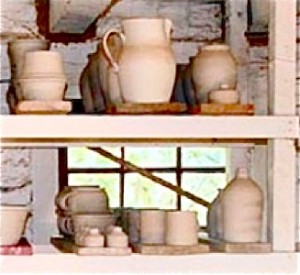 Thank you to author Chanpory Rith of Lifeclever.com for this marvelous little lesson.
Thank you to author Chanpory Rith of Lifeclever.com for this marvelous little lesson.
• • • • • • • • • • • • • • • • • • • •
What 50 pounds of clay can teach you about design.
A 3rd-year graphic design teacher, Alison Woods, once told a parable from “Art and Fear” that’s still stuck in my brain all these years later.
A ceramics teacher announced on opening day that he was dividing the class into two groups. All those on the left side of the studio, he said, would be graded solely on the quantity of work they produced, all those on the right solely on its quality.
His procedure was simple: on the final day of class he would bring in his bathroom scales and weigh the work of the “quantity” group: fifty pound of pots rated an “A”, forty pounds a “B”, and so on. Those being graded on “quality”, however, needed to produce only one pot—albeit a perfect one—to get an “A”.
Well, came grading time and something curious emerged: the works of highest quality were all produced by the group being graded for quantity. It seems that while the “quantity” group was busily churning out piles of work—and learning from their mistakes—the “quality” group had sat theorizing about perfection, and in the end had little more to show for their efforts than a pile of grandiose theories and a pile of dead clay.
Even today, I find myself sometimes in the “quality” group, trying to get it perfect on the first try. I have to remind myself of the two lessons this parable teaches:
1. Don’t drown in the details.
Designers seem prone to obsessive-compulsion. We fight over details like kerning, pixel dimensions, and PMS colors. While being meticulous should be every designer’s trait, diving into the details too quickly can drown you. To use a common metaphor, it’s like rearranging the chairs on the deck of the Titanic. Designers, especially juniors, need to be especially aware of this tendency.
[In her great book Bird by Bird: Some Instructions on Writing and Life] writer Anne Lamott talks about the “shitty first draft,” the first piece of writing “where you let it all pour out and then let it romp all over the place.” Like the prudent half of the pottery class in our parable, Anne lets herself put down as many ideas as possible without the burden of perfection. She makes mistakes, but it’s okay, because she knows she can evaluate and refine them later.
2. Quality improves with each iteration.
Like writing, designing is also a process of generating good and bad prototypes, along with editing and revisions. With each revision, quality increases. I suspect it would work well for all types of design and creativity.



 My webinar on achieving creative break-throughs airs this Thursday at 1pm EST. Pictured here, Zoom recording of pre…
My webinar on achieving creative break-throughs airs this Thursday at 1pm EST. Pictured here, Zoom recording of pre… 
This is so great. Going to share with my Temple University students tomorrow! Thank you.
Jennifer